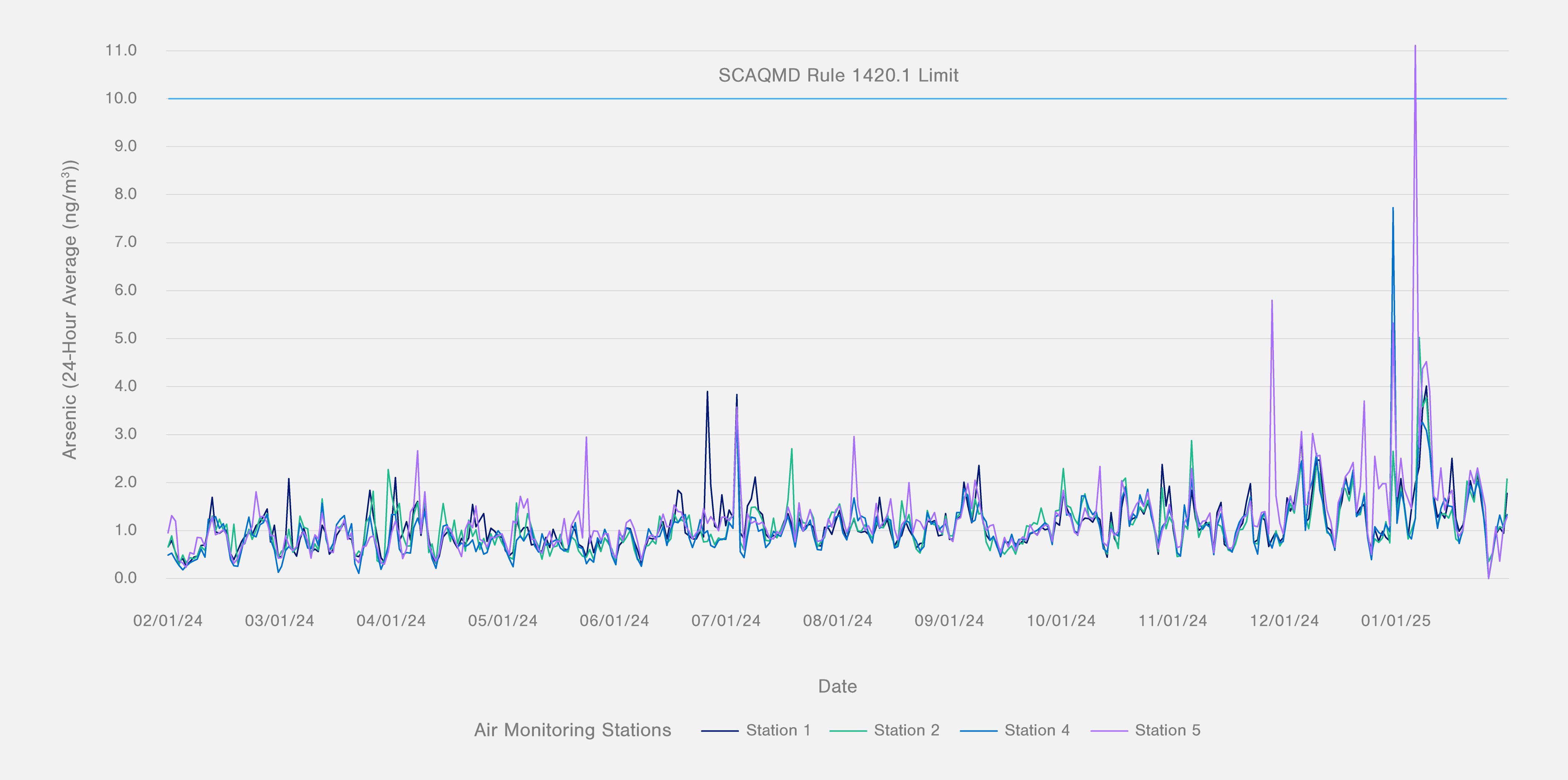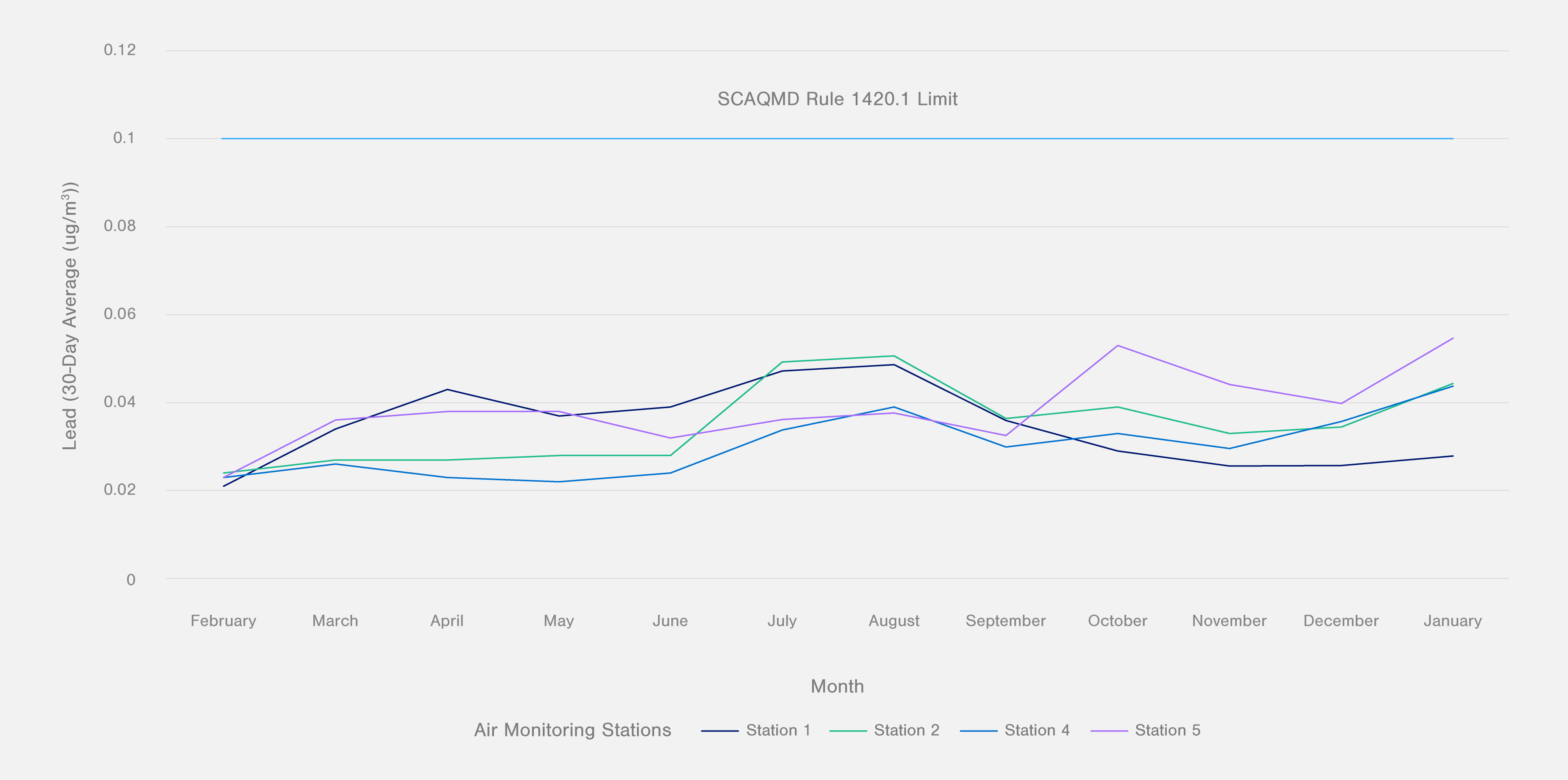Informations complémentaires
Air Monitoring
Ecobat Cares About Clean Air
At Ecobat, we're committed to protecting the environment and our community. We've invested over $50 million in cutting-edge technology to reduce air pollution from our facility. Our advanced pollution control equipment includes a Wet Electrostatic Precipitator (WESP), a Regenerative Thermal Oxidizer (RTO), baghouses, scrubbers, and other systems. These improvements have cut our lead and arsenic emissions by over 95%, making us much cleaner than facilities using standard pollution control systems. To prevent fugitive emissions, we've fully enclosed our processes and use negative air pressure to keep emissions from being released. We also monitor air quality constantly, with sensors around our property that test for lead and arsenic. We share these results with air quality officials and the community to ensure transparency. Our efforts are paying off: in 2019, while recycling 10 million car batteries (120,000 tons of lead), we released only 6.43 pounds of lead (less than in one car battery) and about 2.5 pounds of arsenic. We're proud of our progress and will continue working to keep our air clean.
Results of our recent air monitoring are included on this page.
Informations complémentaires
Ambient Monitoring Summary - February 2024 to January 2025: Arsenic

*The spikes in early January were caused by wildfire impacts at the facility.
Sources:
The long-term health effects of L.A. County wildfire smoke - Los Angeles Times
2025 Wildfire Response - AQMD
Notes:
ng/m3 = nanograms per cubic meter
SCAQMD = South Coast Air Quality Management District
Rule 1420.1 arsenic limit is 10.0 nanograms per cubic meter (ng/m3) averaged over a 24-hour time period
Ambient Monitoring Summary - February 2024 to January 2025: Lead

*The spikes in early January were caused by wildfire impacts at the facility.
Sources:
The long-term health effects of L.A. County wildfire smoke - Los Angeles Times
2025 Wildfire Response - AQMD
Notes:
μg/m3 = micrograms per cubic meter
SCAQMD = South Coast Air Quality Management District
Rule 1420.1 lead limit is 0.1 micrograms per cubic meter (μg/m3) averaged over a 30-day time period